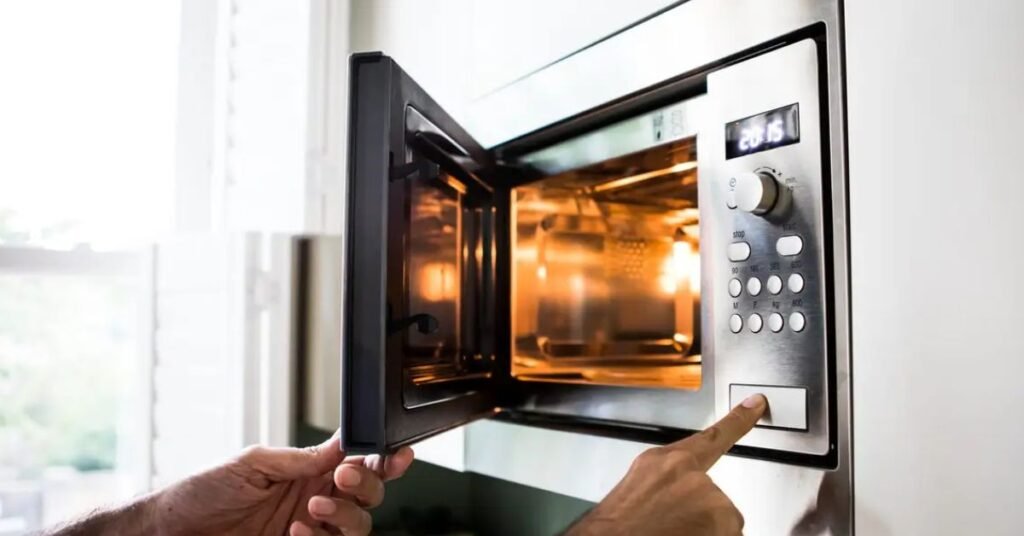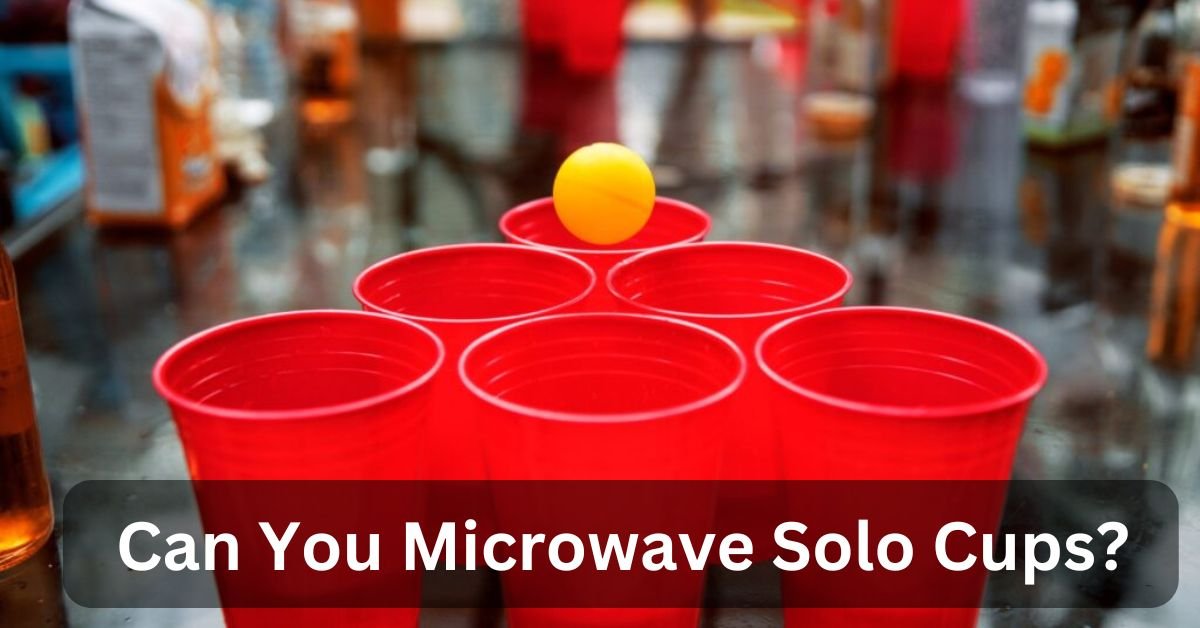Have you ever wondered whether putting solo cups in the microwave is all right?
No, these items are not expected to be microwaved or used for hot food/refreshments.
Let’s set out on this excursion together and reveal the reality behind microwaving Solo cups.
Understanding Solo Cups:
Before we dig into the microwave banter, we should pause for a minute to appreciate the flexibility and comfort of Solo cups.
These notorious expendable cups have been a staple at gatherings, picnics, and get-togethers for ages. Solo cups come in different varieties and sizes, accommodating a wide variety of drink needs.
The Science Behind Microwaving Plastic:
Microwaving plastic, including Solo cups, includes contemplations connected with the kind of plastic utilized and its microwave well-being.
Solo cups, commonly produced using polyethylene, are, for the most part, considered microwave-ok for brief spans when utilized as planned. Here is a short outline of the science behind microwaving plastic and whether Solo cups can be microwaved:
1. Plastic Types:
Plastics are characterized into various classes based on their synthetic arrangement and properties. A few plastics are microwave-protected, meaning they are intended to endure the intensity produced by microwaves without liquefying, twisting, or delivering harmful synthetic compounds.
2. Microwave-Safe Symbols:
Search for microwave-safe images or names on plastic items, as a rule, shown by an image of waves or a microwave symbol. That shows that plastic is tried and supported for microwave use as per well-being principles.
3. Heat Opposition:
Microwave-safe plastics are commonly heat-safe and stable at high temperatures. When warmed in the microwave inside suggested rules, they don’t filter destructive synthetic substances into food or drinks.
4. Melting Point:

Plastic items not marked as microwave-safe might liquefy, disfigure, or discharge harmful synthetic compounds when exposed to the serious intensity created by microwaves. It’s fundamental to avoid using plastics that are not explicitly intended for microwave use.
5. Solo Cups:
Solo cups are usually produced using polyethylene, a kind of plastic known for its strength and adaptability.
While Solo cups are generally considered microwave-safe for short periods when utilized as planned (e.g., warming drinks), it’s fundamental to follow producer rules and avoid unnecessary intensity openness.
Also Read: Microwave Cord Too Short-A Complete Guide
Safety of Microwaving Solo Cups:
Microwaving Solo cups are, for the most part, protected on the off chance that the cups are marked as microwave-protected and utilized as expected. Here are some security contemplations:
1. Microwave-Safe Labelling:
Check for microwave-safe images or marks on Performance cups prior to microwaving them. That shows that the cups are intended to endure the intensity created by microwaves without softening, twisting, or delivering unsafe synthetics.
2. Single Use:
Solo cups are generally intended for single-use purposes, like serving drinks or tidbits. While they might be microwave-safe, they are not planned for rehashed microwave use or delayed openness to warm.
3. Adhere to Rules:
Observe maker rules and proposals for microwaving Solo cups. Guarantee the cups are loaded up with the proper measure of fluid or food and microwave them for the prescribed span to forestall overheating and expected perils.
4. Avoid from Overheating:

To forestall harm to Solo cups and guarantee sanitation, abstain from overheating or delayed microwaving. Use alert while taking care of hot cups or refreshments to stay away from consuming, and permit them to cool momentarily prior to consuming.
5. Non-Microwave-Safe Variations:
A few performance cups may not be named microwave-safe or might be produced using plastics that are not reasonable for microwave use.
Try not to microwave cups that are not explicitly assigned as microwave-protected, as they might soften, twist, or deliver unsafe synthetic substances when presented to warm.
6. Check for Harm:
Prior to microwaving Solo cups, please review them for any indications of harm, like breaks or disfigurements. Harmed cups may not endure microwaving and could present dangers.
Potential Risks:
1. Melting or Twisting:
Solo cups might soften, twist, or become distorted when exposed to high temperatures in the microwave. This can cause spills, breaks, or harm to the cup, possibly causing consumption or making it unacceptable for use.
2. Chemical Leaching:
Microwaving Solo cups, particularly those produced using plastics other than polyethylene, may prompt the draining of harmful synthetic compounds into food or refreshments.
This can happen by assuming that the plastic responds with intensity or microwave radiation, possibly tainting the items and presenting well-being risks.
3. Problem areas:
Ill-advised microwaving or overheating of Solo cups can cause problems inside the cup or its items, expanding the gamble of consuming or burning while taking care of or consuming hot drinks.
4. Release of Poisons:
Microwaving Solo cups that are not designated microwave-protected or produced using materials other than polyethylene might deliver poisons or unsafe substances into the food or beverage, presenting health dangers to shoppers.
5. Fire Hazard:
In uncommon cases, microwaving Solo cups for extended periods or under specific circumstances might represent a fire danger, particularly if the cup comes into contact with a warming component or if combustible materials are available nearby.
Also Read: Can Cast Iron Go In Microwave?-Complete Guide
Ways to Microwave Solo Cups Safely:
It’s reasonable that you need to guarantee safe practices while microwaving Solo cups. Here are a few hints to assist you with microwaving Solo cups securely:
1. Check for Microwave-Safe Marking:

Search for Solo cups explicitly marked as microwave-safe or with microwave-safe images. That demonstrates that the cups are intended to endure the intensity produced by microwaves without dissolving or delivering unsafe synthetic substances.
2. Keep Producer Rules:
Follow any manufacturer’s rules for microwaving Solo cups. This might include suggested warming times, power settings, or other guidelines to guarantee safe utilization.
3. Avoid Overheating:
To forestall liquefying or miss happening, try not to overheat Solo cups in the microwave. Begin with more limited warming times and change depending on the situation to arrive at the ideal temperature without taking a chance of harm to the cups.
4. Use for Expected Purposes:
Solo cups are intended for single-use purposes, like serving drinks or holding snacks. While they might be microwave-ok for brief periods, it’s ideal to utilize them only for their planned purposes and avoid delayed microwaving.
5. Monitor Heating:
While microwaving Solo cups, screen the warming system to forestall overheating or problem areas. Assuming you notice any indications of softening or twisting, stop the microwave right away and eliminate the cup cautiously.
6. Handle with Care:
Be wary while dealing with hot Performance cups, as they might become hot during microwaving. Use stove gloves or kitchen towels to safeguard your hands and keep away from consumers while eliminating the cups from the microwave.
FAQ’s:
1. Could you, at any point, warm a plastic cup in the microwave?
PET plastic cups offer clarity and strength yet are not recommended for microwave use because of the risk of liquefying and likely compound draining.
2. Might you at any point place hot beverages in performance cups?
They’re similar to supernatural cups since they can hold both cold and hot beverages with practically no issues.
3. How would you let me know if a cup is microwavable?
The glass that is protected for use in the microwave will either have a “microwave safe” explanation or an image of a microwave with wavy lines.
4. What occurs, assuming that plastic is microwaved?
It can break a holder and shed smidgens of itself as microplastics, nanoplastics, and leachates, harmful substances that are part of the plastic.
Conclusion:
All in all, microwaving solo cups is a training that is best kept away from. While these famous cups are ideal for serving refreshments at gatherings and social occasions, they are not appropriate for use in the microwave.
To guarantee your security and the honesty of your food and drink, select microwave-safe holders while warming up dinners or refreshments. By settling on informed decisions in the kitchen, we can all appreciate flavourful and safe feasts without undermining our well-being or the climate. Cheers to safe microwaving!

